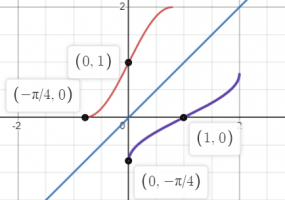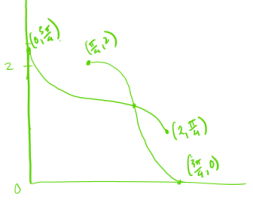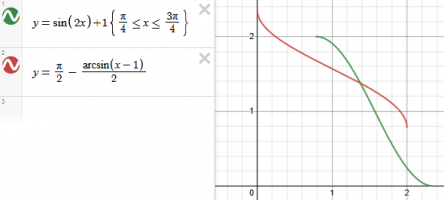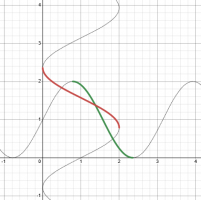Question: Given that f(x)=sin(2x)+1, determine the equation of f−1(x) and hence sketch both functions.
Attempt of response: To obtain the inverse function, I interchange x and y and then make y the subject, yielding:
f−1(x)=21arcsin(x−1)
When graphing f(x) and f−1(x) on my calculator, I get the following: (where red is f(x) and f−1(x))

However, my teacher sketches it differently:

Is my teacher correct? For what reason would my teacher have to change the domain? Is it because the functions must intersect?
Apologies if I've written this weirdly. This is my first post.
Attempt of response: To obtain the inverse function, I interchange x and y and then make y the subject, yielding:
f−1(x)=21arcsin(x−1)
When graphing f(x) and f−1(x) on my calculator, I get the following: (where red is f(x) and f−1(x))

However, my teacher sketches it differently:

Is my teacher correct? For what reason would my teacher have to change the domain? Is it because the functions must intersect?
Apologies if I've written this weirdly. This is my first post.


